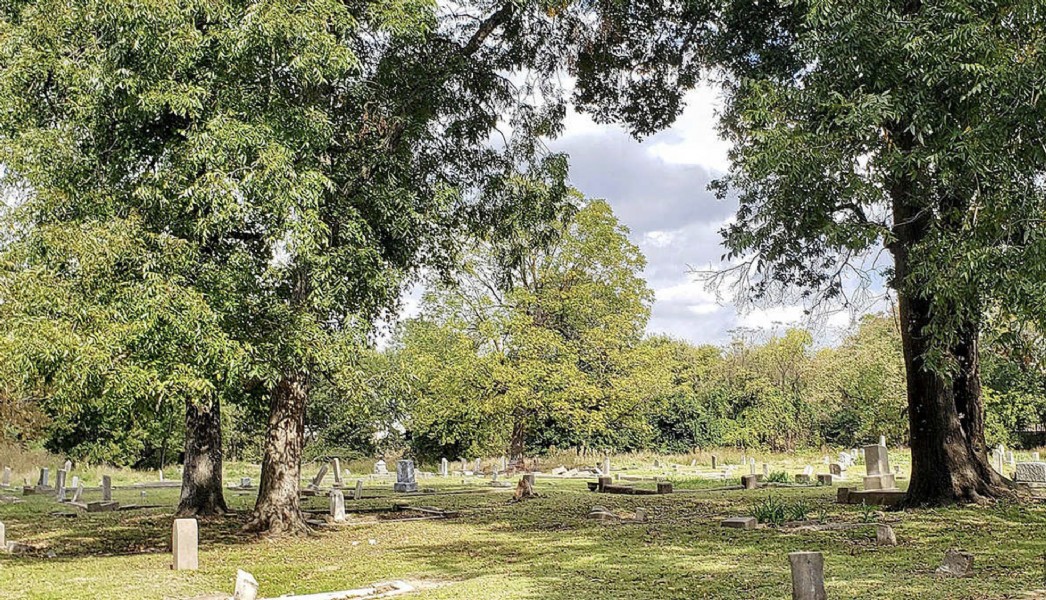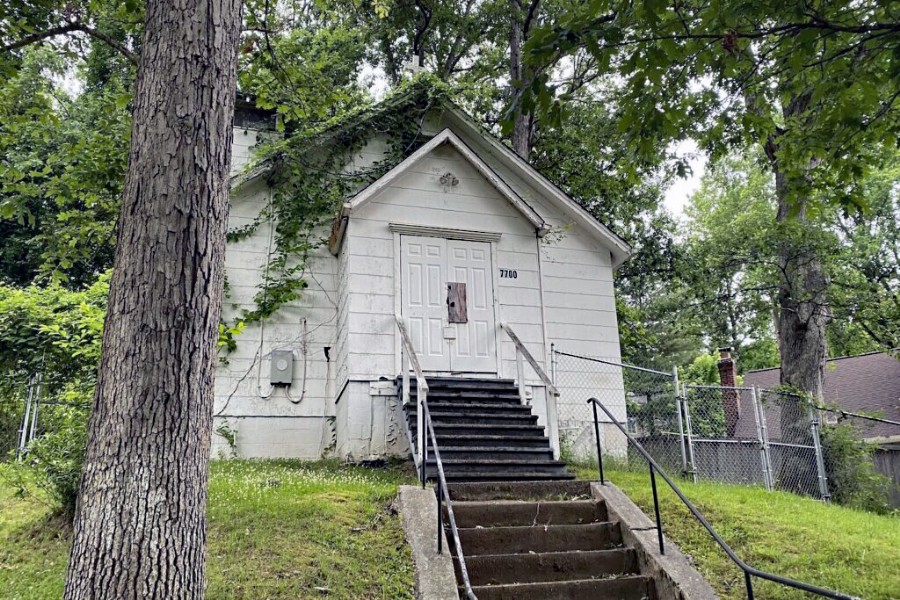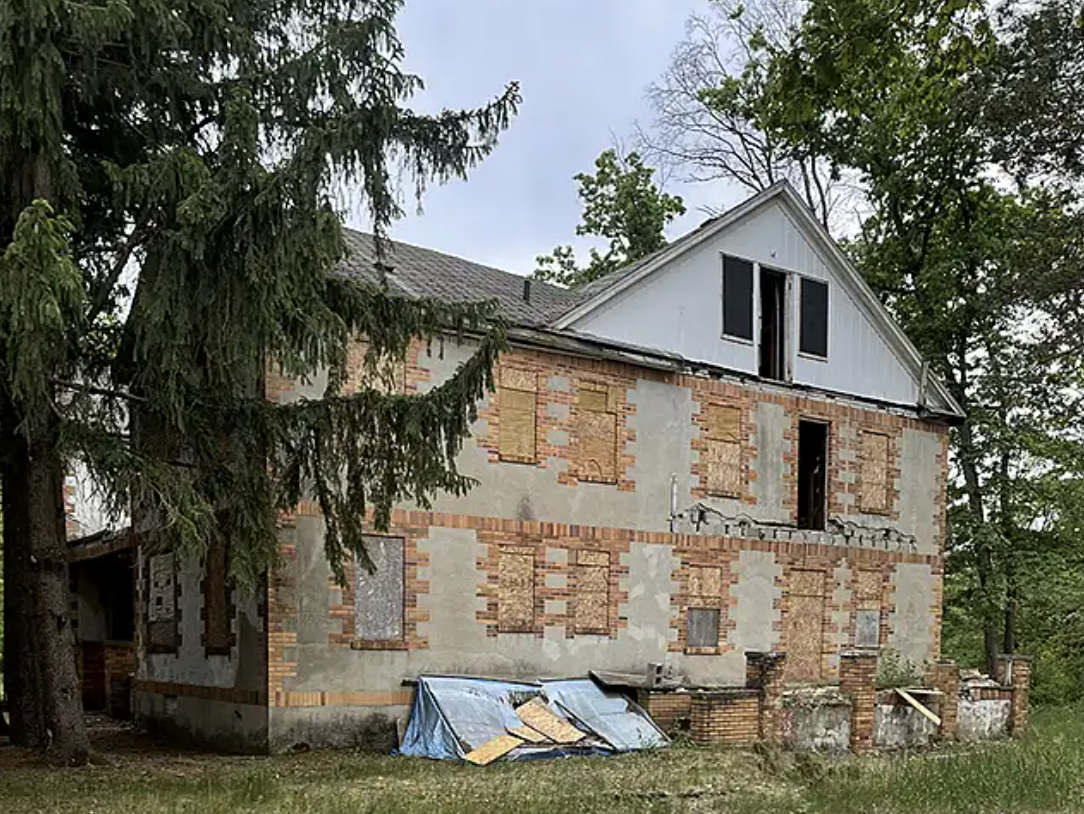
Olivewood Cemetery - Houston, Texas
Incorporated in 1875, Olivewood Cemetery in Houston, Texas, is one of the oldest-known platted African American cemeteries in Houston, with more than 4,000 burials on its 7.5-acre site. The final resting place of many notable figures in Houston's early African American community and of formerly enslaved Africans, this Texas Historic Cemetery and UNESCO Site of Memory for the Slave Route Project also illustrates unique African American burial practices developed in pre-Emancipation Black communities, including upright pipes as grave features, the use of ocean shells as grave ornaments, and upside-down or inverted text.
Over time, changing demographics and increased development led to the cemetery's decline and abandonment. Decades of neglect, vandalism, uncontrolled invasive vegetation, and the occasional use of the cemetery as an illegal dumping ground took their toll. But the most persistent threat is the impact of extreme weather events due to climate change. Historic gravesites are being damaged and even lost entirely due to extreme precipitation events that cause erosion as uncontrolled run-off and greater volumes of water move at higher speeds through the bayou adjacent to the cemetery.
The nonprofit Descendants of Olivewood, Inc. formed in 2003 to restore and maintain the cemetery and now has legal guardianship. With the support of an African American Cultural Heritage Action Fund grant in 2021, the organization has undertaken a comprehensive study to clarify the extent of the threat from flooding and erosion, and identify specific protection and mitigation measures, but advocates will need partnerships and funding in order to implement these plans.

Morningstar Tabernacle No. 88 Order of Moses Cemetery and Hall - John Cabin, Maryland
In 1880, the formerly enslaved couple Robert and Sarah Gibson bought property on what is now Seven Locks Road in Cabin John, Maryland. By 1895 nine other black families had joined them in buying land here. Together these families built a self-reliant settlement, called Gibson Grove, later just No. 10.
In 1882, the community organized the first black school in the district. In 1885, it established Morningstar Tabernacle No. 88 of the Order of Moses. This benevolent society helped members in times of need and in death. Its Moses Hall and Cemetery were adjacent to each other. By the 1880s the community was on the church circuit; in 1898 Sarah Gibson gave land to formally establish the Gibson Grove AME Zion Church. The school for the local black children never had a dedicated building; it was alternatively housed in the church and the Moses Hall lodge.
The Moses Hall foundation in Cabin John is the last known surviving remnant of an Order of Moses hall in Montgomery County.

Hotel Casa Blanca - Idlewild, Michigan
Hotel Casa Blanca played a significant cultural role in the historic Black resort community of Idlewild, Michigan. Designed and built by Black architect Woolsey Coombs in 1949, Hotel Casa Blanca served as a premier lodging site for African American travelers, entertainers, entrepreneurs and thought leaders during segregation, and was included in The Negro Motorist Green Book. Known as “Black Eden,” by the 1950s Idlewild drew thousands of annual visitors, and Hotel Casa Blanca hosted performances by legendary African American artists like Louis Armstrong, Count Basie, and Aretha Franklin.
After integration, like many formerly segregated Black resorts, Idlewild experienced lower visitation and economic disinvestment. Today, the historic resort community has a population of around 700 residents, and Hotel Casa Blanca has been vacant and deteriorating for over 30 years.
With hopes of saving the building, the previous owner of Hotel Casa Blanca sold it to 1st Neighbor LLC, a Black woman-led nonprofit. 1st Neighbor plans to rehabilitate the hotel into a bed-and-breakfast including overnight suites, meeting spaces, and a heritage and learning center, and has taken crucial steps towards restoration, including removal of hazardous material and developing architectural plans for reuse.
/Blog/Endangered-African-American-Historic-Sites/Endangered-African-American-Historic-Sites/Pine-Tree-Hotel-Mosquito-Beach-South-Carolina/?link=1&fldKeywords=&fldAuthor=&fldTopic=0
Wednesday, February 19, 2020 • • General
The Pine Tree Hotel was one of the few beach hotels open to African Americans in South Carolina during segregation in the 1960s. Hurricane Hugo in 1989 badly damaged the landmark, and it hasn't been open since.
The 14-room hotel still sits boarded up on James Island in Charleston, but a new $490,000 grant will help pay to restore the historic site near Mosquito Beach, according to the Historic Charleston Foundation.
/Blog/Endangered-African-American-Historic-Sites/Endangered-African-American-Historic-Sites/Oregons-most-endangered-places-in-2020-/?link=1&fldKeywords=&fldAuthor=&fldTopic=0
Friday, February 7, 2020 • • General
Restore Oregon has released its annual Oregon's Most Endangered Places list of historic properties that are threatened by neglect, disuse or redevelopment.
New to the list this year is an Elks lodge that served residents of the historically African-American neighborhood of Albina and others. It was home to Elks members when the organization did not allow black members at lodges, it hosted USO events for black service members and it was a YMCA.
Another property that symbolizes the city's African-American heritage is the Mayo House. The owners of the 1895 home plan to turn it into an arts and community center on the lot where a relative's boarding house stood until it was torn down under racist "anti-blight" programs in the 1980s, according to Restore Oregon. Their plan is to turn it into a community center and hub of African-American arts, history and culture.
/Blog/Endangered-African-American-Historic-Sites/Endangered-African-American-Historic-Sites/Malvern-Rosenwald-School-/?link=1&fldKeywords=&fldAuthor=&fldTopic=0
Tuesday, February 4, 2020 • • General
The Malvern Rosenwald School building in Malvern, Arkansas was built in 1929. A total of $32,150 was allocated to Arkansas for the 1928-1929 budget year, which allowed the completion of 29 schools, three teachers' homes, seven vocational shops, and three school additions comprising five classrooms. Of the 29 schools completed during that period, the Malvern Rosenwald School was one of two eight-room schools built. (The other eight-room school, Scipio Jones High School in North Little Rock, has since been demolished.)
This old school is currently in the process of renovation, and this project is overseen by Henry Mitchell. Mitchell wants to see this property brought back to life, and you can help donate or give him a call at 501-818-9126 to see how you can help!
/Blog/Endangered-African-American-Historic-Sites/Endangered-African-American-Historic-Sites/Climate-change-threatens--Harriet-Tubman--Underground-Railroad-National-Historic-Park/?link=1&fldKeywords=&fldAuthor=&fldTopic=0
Monday, February 3, 2020 • • General
At first glance, the landscape seems to have changed little since Harriet Tubman's day. The pine forests, marshes and farm fields she once traversed as a conductor on the Underground Railroad have remained largely untouched over the past 160 years. Even the country store that was the setting of her earliest known defiance against slavery still stands along a sleepy ribbon of road.
But this sacred land is changing, its permanence imperiled by the unholy forces of climate change. By the end of this century, much of land so recently designated as the Harriet Tubman Underground Railroad National Historic Park and the area around it could be underwater, researchers say.
/Blog/Endangered-African-American-Historic-Sites/Endangered-African-American-Historic-Sites/African-American-Most-Endangered-Historic-Places-for-2019/?link=1&fldKeywords=&fldAuthor=&fldTopic=0
Sunday, February 2, 2020 • • General
Willert Park Courts in Buffalo, New York is a unique example of early Modernism with bas-reliefs depicting scenes of everyday life, was New York State's first housing project constructed specifically for African Americans. Today, the site is vacant and many of its structures are open to the elements. The Buffalo Municipal Housing Authority has proposed demolishing the complex to construct replacement housing.
/Blog/Endangered-African-American-Historic-Sites/Endangered-African-American-Historic-Sites/African-Amerian-Most-Endangered-Historic-Places-for-2019/?link=1&fldKeywords=&fldAuthor=&fldTopic=0
Sunday, February 2, 2020 • • General
Listed in the Green Book, The Excelsior Club in Charlotte, North Carolina, was a leading private African American social club in the Southeast, hosting artists like Nat King Cole and Louis Armstrong during its heyday. The Art Moderne building needs significant investment. The property is currently listed for sale for $1.5 million, but even if a buyer is found, a reuse plan and significant investments are necessary to ensure a strong future.


